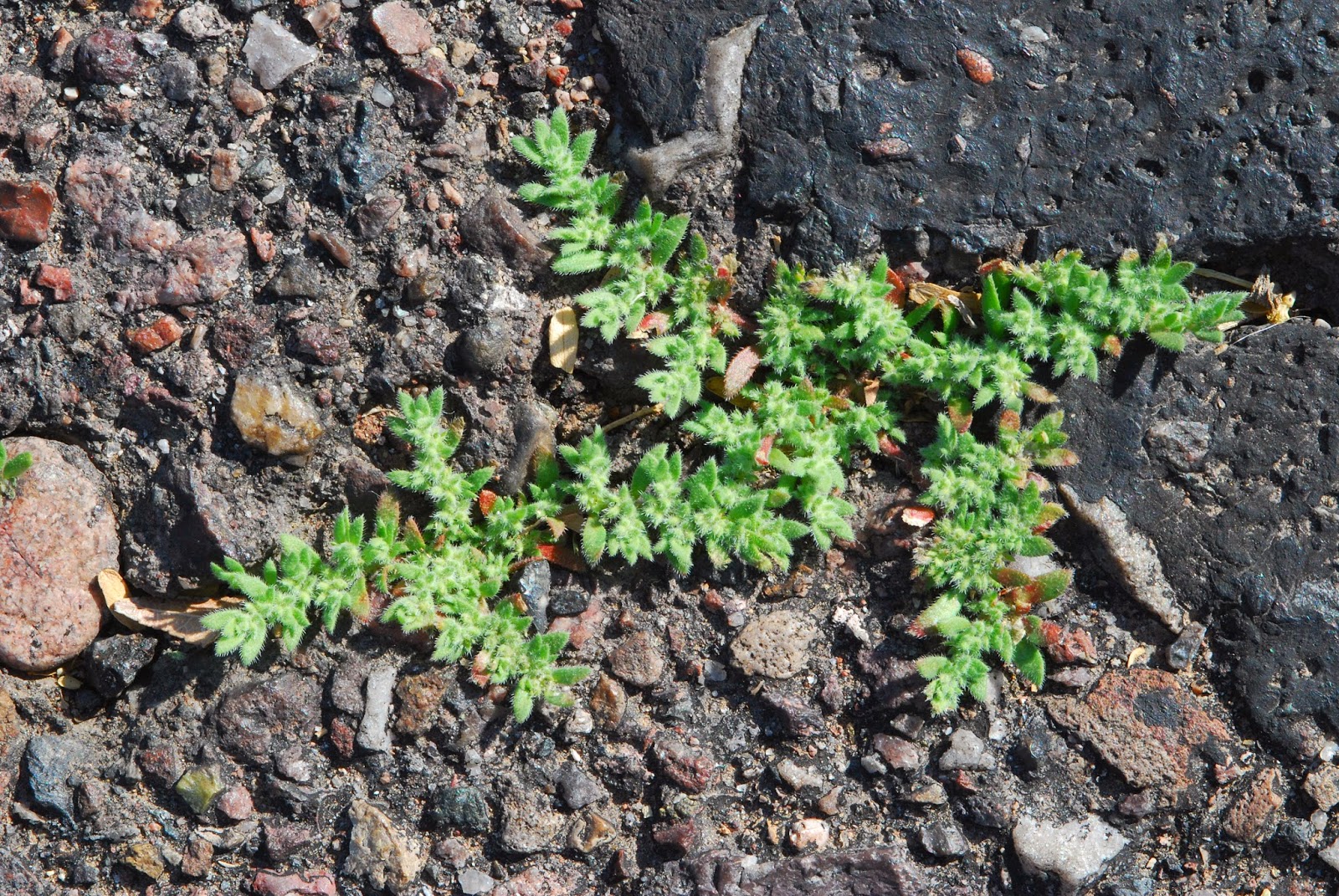You gotta love a plant that was given the name Hairy Rupturewort (
Herniaria hirsuta). With a name like that, you better be tough, and tough it is. This inconspicuous little plant lives in cracks, or ruptures, in the asphalt of our neighborhood streets, one of the hottest, driest environments a plant could take root in. Peering at it through my hand lens, I saw that the leaves are covered with soft hairs. Although the cracks probably began due to the natural heaving of the earth, rupturewort and other plants that occupy this microhabitat help to widen the cracks. Oblivious, or at least unhindered, by the local traffic, rupturewort adds sinuous stripes of green to the road. The plant's natural habitat in northern Africa is probably in similar cracks in rocks.
Rupturewort was imported to North America as a horticultural marvel and herbal remedy. Another species,
Herniaria glabra, or smooth rupturewort (i.e. not hairy), is marketed as a
"carpet" plant to use in walkways, and as
medicinal tea or extract. You can even purchase a
poster that includes a botanical illustration of rupturewort.
Moroccan urologist, Fouad Atmani, has been experimenting with rupturewort to better understand its effects on kidney stones. His 2004 article,
Effect of herb extract from Herniaria hirsuta on calcium oxalate crystallization in vitro; and another published in 2003,
Effect of aqueous extract from Herniaria hirsuta on experimentally induced calcium oxalate nephrolithiasis in rats, document that the herb is indeed useful in dealing with kidney stones, although it does not actually rupture, or break them. What it does do is inhibit the stones from adhering to kidney tissue, which helps to reduce mineral build-up and the excruciating pain and other side effects that comes with it. Extracts from the plant have been used for centuries as a medicinal remedy to treat kidney stones and as a diuretic. Now Dr. Atmani's research has shown that early herbalists seemed to know what they were doing.
Is it a divine synchronicity that my fascination with this plant coincided with my own personal episode of kidney stones? The world works in mysterious ways! Time to make some rupturewort tea. Fortunately, there is a plentiful supply in the street.














































